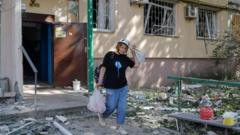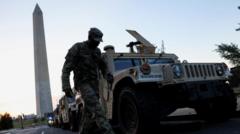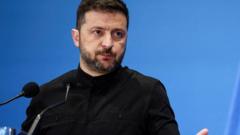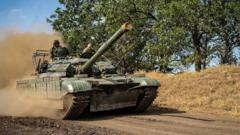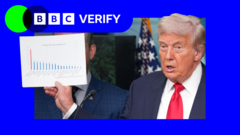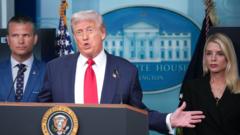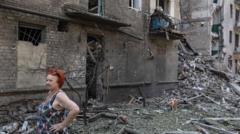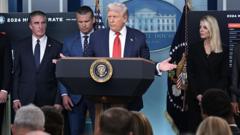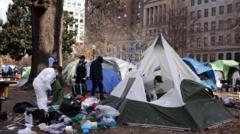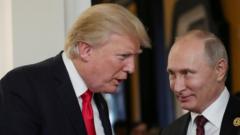Rwanda and the Democratic Republic of Congo have signed a significant peace treaty, heralded by both nations and the U.S. as a pivotal step toward regional stability. Key elements of the deal require the disarmament of armed groups, but questions remain regarding implementation and the status of Rwandan troops in Congolese territory.
Peace Deal Signed Between DR Congo and Rwanda in Washington
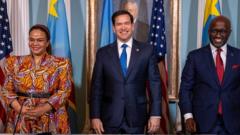
Peace Deal Signed Between DR Congo and Rwanda in Washington
The long-awaited peace agreement aims to end years of conflict while raising U.S. interests in the mineral-rich region.
Rwanda and the Democratic Republic of Congo (DRC) have formalized a peace agreement in Washington, D.C., in what is being hailed as a step towards resolving a protracted conflict between the two nations. The deal, framed by U.S. President Donald Trump as a “generational victory”, is designed to foster stability and open access to the resource-rich region for U.S. business interests.
The agreement outlines a framework for the "disengagement, disarmament, and conditional integration" of various armed factions that have plagued eastern DRC, particularly the notorious M23 rebel group. Despite the optimism surrounding the treaty, skepticism remains due to the historical ineffectiveness of prior agreements.
Trump, who was flanked by key members of his administration—including Vice-President JD Vance and Secretary of State Marco Rubio—characterized the deal as "a glorious triumph" moments before adding his signature, formally ceasing hostilities between the nations. Congolese President Félix Tshisekedi’s office praised the accord as "the most significant diplomatic achievement in over 30 years," reflecting hope for a peaceful future.
The signing follows earlier discussions, including a "declaration of principles" established in April, alongside ongoing mediation efforts by Qatar. Though both leaders have expressed willingness to meet, precise arrangements have yet to be finalized. Analysts suggest that without a solid framework for enforcement, the current peace deal risks becoming another in a long line of failed accords.
The ongoing conflict intensified earlier this year when M23 rebels gained substantial territory in eastern DRC, resulting in harsh humanitarian consequences as thousands of civilians were uprooted from their homes amidst violence.
The DRC government has reportedly offered the U.S. greater access to vital minerals—including coltan, a critical component in many technologies—in exchange for security assurances, presenting a strategic dimension to the agreement.
For its part, Rwanda adamantly denies allegations of supporting M23 forces, attributing its military presence in eastern DRC to ongoing threats from various armed groups, including the FDLR, which it deems a concern due to historical ties to the Rwandan genocide. Tensions have arisen between the two nations, as each accuses the other of harboring hostile factions, complicating the peace talks.
While the agreement emphasizes "territorial integrity" and the return of displaced persons, significant areas remain vague. Key issues include the withdrawal of Rwandan troops—currently estimated at 7,000 in DRC territory—and whether the M23 will vacate territories they occupy.
Concerns have been raised regarding the ambiguity surrounding operational definitions like “disengagement” versus “withdrawal”. Indeed, Rwandan officials have stressed that their military presence is justified and will remain until the FDLR are dealt with comprehensively.
Without clear definitions and mutual commitments, crucial questions surrounding the deal linger, including how international observers will ensure compliance with disarmament and reinforcement of humanitarian access in the region.
The recent peace agreement stands as a testament to ongoing diplomatic endeavors and is tested against a backdrop of regional insecurity and historical animosities—an uncertain yet hopeful chapter for both nations and a significant moment for U.S. foreign policy interests in Africa.

